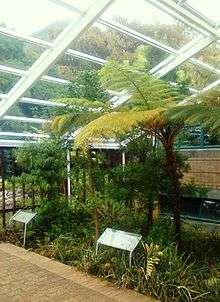Molteno Formation
| Stratigraphy of the Karoo Supergroup in the Karoo Basin | ||||
|---|---|---|---|---|
| Period | Group | Formation west of 24°E | Formation east of 24°E | Assemblage Zone |
| Jurassic | Drakensberg | Hiatus | Drakensberg | |
| Stormberg | Clarens | |||
| Triassic | Elliot | |||
| Molteno | ||||
| Beaufort | ||||
| Burgersdorp | Cynognathus | |||
| Katberg | Lystrosaurus | |||
| Balfour | ||||
| Permian | Dicynodon | |||
| Teekloof | ||||
| Cistecephalus | ||||
| Middleton | ||||
| Tropidostoma | ||||
| Pristerognathus | ||||
| Abrahams-Kraal | Koonap | |||
| Tapinocephalus | ||||
| Eodicynodon | ||||
| Ecca | Waterford | Waterford | ||
| Tierberg / Fort Brown | Fort Brown | |||
| Laingsburg / Ripon | Ripon | |||
| Collingham | Collingham | |||
| White Hill | White Hill | |||
| Prince Albert | Prince Albert | |||
| Carboniferous | Dwyka | Elandsvlei | Elandsvlei | |
The Molteno Formation is a palaeontological formation of the Stormberg Group, located in the main Karoo (Gondwana) Basin, South Africa.
It dates to the Upper Triassic (Carnian) period and is rich in fossils.
Formation
Formed from river sands when the region's climate was still wet, this layer represents the first stage of the gradual desertification that is recorded in the sediments of the Stormberg Group - from the Triassic period, through the Jurassic, as the Gondwana supercontinent moved slowly northwards.
This sandstone is now exposed as cliffs in the Drakensberg and can be easily recognised by its sparkling appearance (this is due to tiny quartz crystals that bind the sand grains together). Dolorite intrusives are also common. Rocks of this formation provide a unique window into the time of the origin of the dinosaurs, mammals, and possibly also of flowering plants.
Flora and Fauna

The Molteno Biome, as the reconstructed community of flora and fauna is known, showed an unusually large biodiversity at class and order level, especially in insects and gymnosperms (which reached their heyday during this period). Other especially common flora were species of fern, horsetail and cycad.
Much of the region, at the time, fell within an enormous network of inland river deltas. To date, seven primary habitat types (or ecozones) have been identified, each with their own large assemblage of species:
- Dicroidium riparian forest (types 1 & 2)
- Dicroidium woodland
- Sphernobaiera woodland
- Heidiphyllum thicket
- Equisetum marsh
- Fern & Gingkophytopsis meadow[3]
Location
The rock formation stretches in a broad band, from the Eastern Cape, through Lesotho and the Orange Free-State in South Africa. It is named after the town of Molteno in the Stormberg Mountains of the Eastern Cape.
Due to the lush vegetation of the Triassic river deltas, this is today the coal-bearing horizon of the Eastern Cape, with four main coal seams: Indwe, Guba, Molteno and Gubenxa.
See also
| Wikimedia Commons has media related to Molteno formation. |
References
- ↑ Rubidge, B.S. (2005). "Re-uniting lost continents – Fossil reptiles from the ancient Karoo and their wanderlust". South African Journal of Geology. 108 (1): 135–172. doi:10.2113/108.1.135.
- ↑ Selden, P.; and Nudds, J. (2011). "Karoo". Evolution of Fossil Ecosystems (2 ed.). Manson Publishing. pp. 104–122. ISBN 9781840761603.
- ↑ JM Anderson: Gondwana Alive. National Botanical Institute. Pretoria: 2001. p.74.